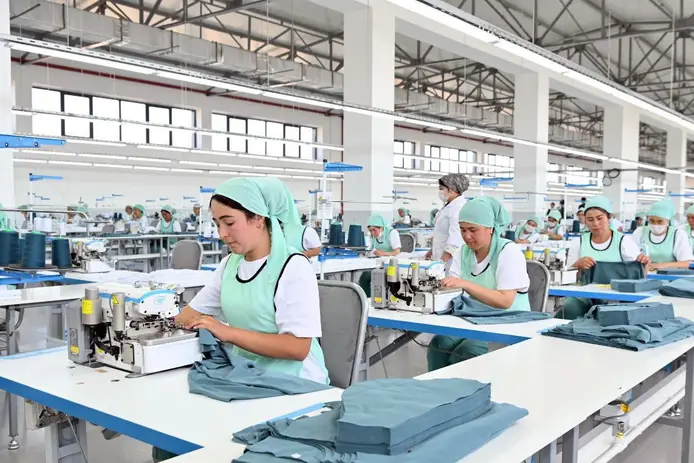Cotton from Uzbekistan: comeback after boycott, potential alternative to China
02 July, 2022

For decades, sourcing cotton in Uzbekistan was considered risky, with child or forced labour used in most cases to harvest by hand. In 2009, more than 300 international brands - including Burberry, Puma, Gucci and Adidas - even joined forces in the Cotton Campaign and announced a boycott of Uzbek cotton products.
This hit hard, especially financially, and the country's leadership took the boycott as an opportunity to make some changes: It made forced labour on cotton plantations a criminal offense, modernised cotton cultivation and increased cotton pickers' wages and introduced a minimum wage.
In March of this year, the International Labor Organization (ILO) confirmed that Uzbekistan had succeeded in completely eliminating forced and child labour from the cotton production cycle, and the Cotton Campaign lifted its global boycott of Uzbek cotton. The ILO now advocates for international buyers to re-engage in the country, which expects international companies and retail chains to buy Uzbek cotton again.
Cotton cultivation in Uzbekistan has a long tradition
Cotton cultivation in Uzbekistan has a long tradition that began with Chinese merchants who brought the first varieties of cotton to the region more than 2,000 years ago. That is why it is also called “white gold”, because cotton has always been one of the most important export goods, along with gold.
Now the country seems to be on the road to success and could become an alternative to China, especially in view of the current restructuring of international supply chains. Uzbekistan's textile sector is now once again one of the country's leading industries, and employed around 350,000 people in 2021. Textile export growth rates doubled in 2021 compared to the previous year, reaching 3 billion US dollars. Exports are expected to reach 3.8 billion to 4.3 billion US dollars in 2022 and 7 billion US dollars by 2025, putting Uzbekistan on par with countries such as Sri Lanka and Pakistan.
Uzbekistan’s growth
In total, there are more than 130 economic clusters across Uzbekistan where cotton is grown, ginned and processed, accounting for nearly 18 percent of annual cotton production. As a result, fibre processing increased 2.5-fold in just two years - while only 45 percent of cotton fibre was processed domestically in 2016, it was nearly 90 percent four years later.
According to official data, in the third quarter of 2019 alone, the textile sector accounted for about three percent of the gross domestic product and more than 40 percent of the non-food consumer goods production. The annual production growth in recent years has been around 18 percent, with exports around 10 percent, and in the first quarter of 2021 alone, the industry expanded by 38 percent year-on-year.
International textile industry interested in Uzbekistan again
According to German media project company Berliner Korrepondentenbüro, there are many factors that make Uzbekistan attractive for German and international companies again: Among the availability of raw materials, the country also has low production costs, a motivated workforce and many years of production experience. In addition, Uzbekistan has been part of the EU's Generalized System of Preferences (GSP+) since April 2021 last year, which means economic incentives such as lower export taxes. These facilitate foreign trade and experts expect annual exports to the EU to reach 250 million US dollars in 2022.
“The interest of the German business community in Uzbekistan has increased significantly in recent years. The textile industry has always been one of the most attractive sectors of the Uzbek economy. Investments in the sector offer enormous opportunities for German suppliers, such as mechanical engineering,” confirmed Christian Tegethoff, founder and managing director of CT Executive Search.
“Due to its relatively large population and favourable geographic location with proximity to China, Uzbekistan also has potential as a production location. However, investors should pursue a forward-looking human resources policy and bear in mind that training and further education require considerable resources. Skilled workers in particular are rare and often have to be trained by the companies themselves,” advised Tegethoff.
To brigde this gap, the textile institute in Tashkent is currently introducing a system of dual education based on the German model: While three days a week are dedicated to studies, the rest of the time is spent doing practical training in a textile technology park. In addition, more than 30 Uzbek textile manufacturers took part in the recently concluded Heimtextil fair.
“Uzbek manufacturers have held a number of successful negotiations with foreign business partners and signed export contracts with German, Czech, Polish and Turkish companies. Global brands such as C&A, s.Oliver, Falke, Triumph, Biberna and others are also looking at the Uzbek market with great interest. This is evidenced by successful business talks between a high-ranking Uzbek delegation and representatives of these companies, which took place in Germany in mid-June,” reported Berliner Korrespondentenbüro.
Useful Links:
Source: fashionunited.uk
TAG(s):
